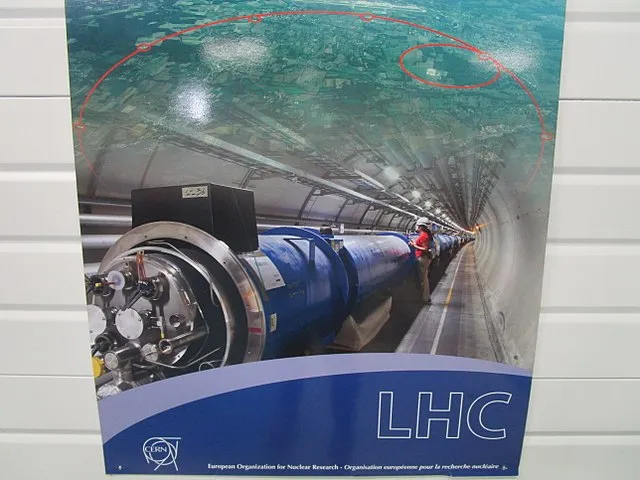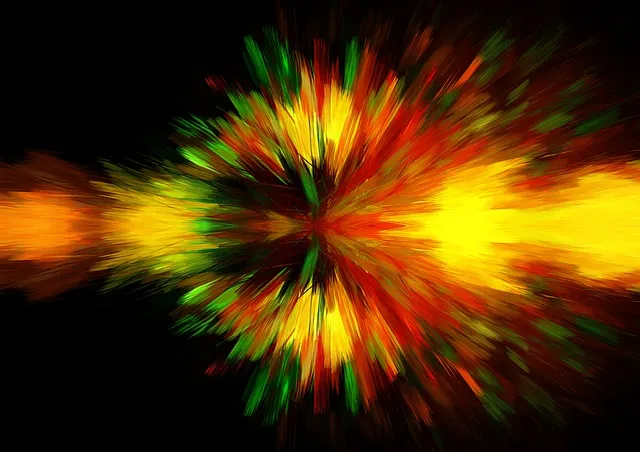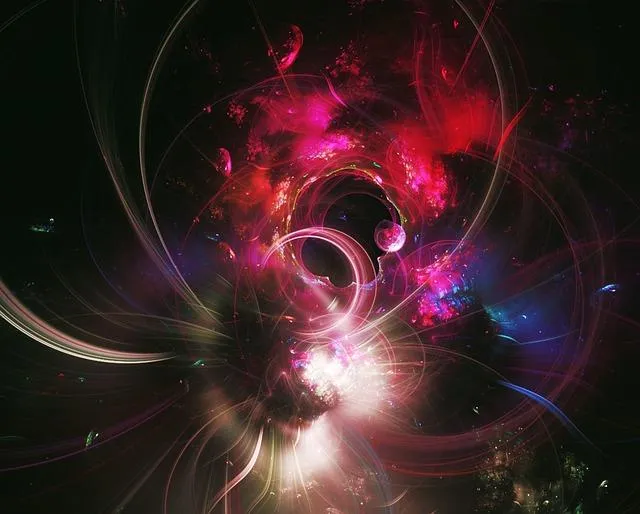There are many developers and people with programming skills hanging around on Steem and in particular around Utopian.io. Three months ago, I asked these people a very simple question. Would they be interested in contributing to state-of-the-art research in particle physics?

[image credits: Roxaneweb (CC BY-SA 4.0)]
This idea was received very positively, and about 10 people answered that they want to try and come on board.
This was sufficient to me to start a project of allowing Steem contributions to my own research work.
The main topic is utilizing the results found by the Large Hadron Collider (LHC) at CERN in the best possible way through the development of an open source platform for the reinterpretation of LHC results.
We are now three months later and I'm here to summarize what has been accomplished so far. I will briefly review the grand goal of this project, the material on particle physics I provided (to help understanding the context) and how to tackle this with programming.
The amazing fact is that a public platform that I am co-developing, used by particle physicists from all over the world, now includes contributions from Steem.
UTILIZING THE RESULTS OF THE LARGE HADRON COLLIDER
This is an exciting time for particle physics. Its Standard Model is now complete (in terms of particle discoveries), and data seems to confirm it very strongly.

[image credits: Pixabay (CC0)]
However, it is clear that the Standard Model is not the end of the story. There must be something behind it.
The LHC experimental collaborations are therefore undertaking many searches for the new phenomena predicted by the various theories proposed to extend the Standard Model.
The only problem is that there is a plethora of possible variants of a large number of theories, and not all of them can be tested experimentally due to limited human resources.
For this reason, platforms on which anyone can test the model of physics of his/her dream are very important. Some collaborators and myself started to develop an open source platform (named MadAnalysis 5) to do just that several years ago. The problem is that, in order to use it for the reinterpretation of the results of the LHC, experimental analyses must be reimplemented one by one (at least for now).
This is where Steem and Utopian.io come into the game!
PARTICLE PHYSICS ON STEEM AND UTOPIAN.IO

[image credits: Pcharito (CC BY-SA 3.0)]
Using Steem and Utopian to contribute to state-of-the-art research is not easy, for the simple reason that even if one is skilled in programming, one needs to understand what to program.
This, of course, is where I can help.
Through a series of posts accompanied by exercises (that have been rewarded when done), I reviewed the objects that are observed in a typical LHC detector, how analyses make use of them, and how this is implemented in the MadAnalysis 5 framework.
In detail, we have:
Installation instructions with generalities on the MadAnalysis 5 framework and its installation procedure from GitHub.
Information on some of the objects observed in a detector (photons, electron and muons) along with a basic programming exercise in the MadAnalysis 5 framework.
Information on the properties of the reconstructed objects and introduction of the concept of jets of strongly-interacting particles. All of this with an exercise addressing a real ATLAS search for a theory called supersymmetry.
Histogramming and object isolation. Or, in other words, how to focus solely on quality objects reconstructed in a detector and make useful plots. Here, the exercise focused on a real CMS search for dark matter.
Last but not least, I have focused on analysis strategies, and the concepts of selection cuts and signal regions.
Now, everyone is correctly equipped to tackle the real deal!
CURRENT OUTCOME OF THE PROJECT
Although task requests have not been posted yet, five Steemians (@crokkon, @effofex, @irelandscape and @mactro) strongly contributed to the project so far and solved most of the exercises.
Three histogramming modules (here, here. and there) have been developed as external tools to be used with MadAnalysis 5, by @crokkon, @effofex and @irelandscape. All of these modules are now officially endorsed by the MadAnalysis 5 team.

[image credits: Pixabay (CC0)]
One tutorial explaining how to run MadAnalysis 5 on windows 10 has been released. This tutorial is now an official MadAnalysis 5 tutorial.
Moreover, @irelandscape wrote varied posts explaining his understanding of particle physics, which I took a lot of pleasure in reading (and clarifying where necessary).
Very importantly, it is not too late to join the project and get rewarded for it!
THE FUTURE

[image credits: geralt (CC0)]
It is now time to make explicit task requests for reimplementing varied ATLAS and CMS searches for new phenomena at the LHC. In other words, it is time for Steemians to start contributing actively to particle physics research, and be rewarded for it.
While more details will be posted in the next couple of weeks, please do not hesitate to re-read the posts mentioned above for help on how to do.
Moreover, on Friday I released a freely available comprehensive and pedagogical introduction to MadAnalysis 5. Appendix B should be useful, as well as sections 4.1, 4.2, 4.3 and 4.4. The rest will be important too, but for the next phases of this project.
I am now about to leave for two weeks of offline life. I wish everyone a very nice summer break and thank everyone for helping make use of Steem for scientific research.
See you all by the end of the month!